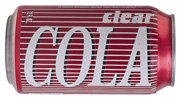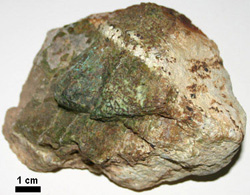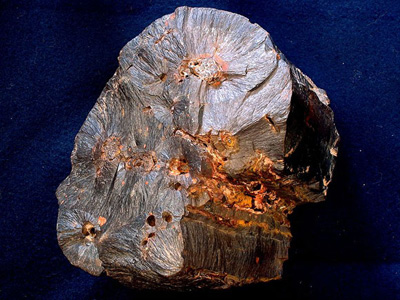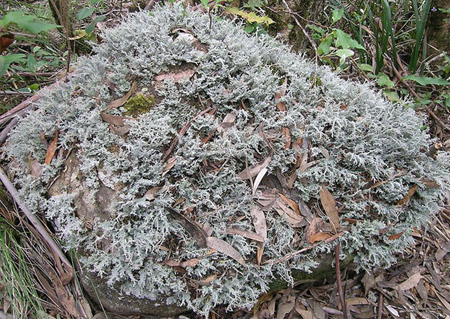
Read on to see how this soda can relates to chemical weathering. |
Chemical Weathering
Like physical weathering, there are many types of chemical weathering too. You have probably seen the effects of chemical weathering in some way. Read through the explanations to see if you have seen any of them.
Carbonation

The soda that you may drink contains carbonation. The fizz comes when carbon dioxide is dissolved in water to form carbonic acid. When carbon dioxide leaves the mixture, the soda loses its fizz and water is left behind. Carbonation in the atmosphere also acts on rocks.
When atmospheric carbon dioxide combines with water in the atmosphere, it forms carbonic acid. This acid reacts easily with the minerals in some rocks, especially limestone. Here you see an un-weathered limestone on the left and a limestone weathered by carbonation on the right. Carbonation results in a change in the chemical form of the rock and weakens the rock so that it breaks down more easily.
Hydration

The carbonated soda may taste good, but nutritionists say that it is not the best thing to drink when you are thirsty because it does not hydrate as well as water does. Staying hydrated (full of water) is essential to life.
When water is added to the mineral structure of rocks, they are said to be hydrated. When water molecules are added to a mineral’s crystal structure, new minerals are usually formed, so it is considered a chemical process. In this example, the water from rain changed the mineral, which in turn changed the rock’s color. The green area represents an area of hydration.
Hydrolysis

Remember the hydrologic cycle? It is the process of cycling of water through the atmosphere and Earth. You should see a pattern in these words: hydrologic, hydration, and hydrolysis.
Hydrolysis is a kind of chemical weathering that takes place when water reacts with silicate minerals in soils and rocks. In a hydrolysis reaction, the silicate minerals are broken down or weakened. This picture shows the mineral, kaolinite, a soft clay mineral that is formed when the harder mineral, orthoclase, undergoes hydrolysis.
Oxidation

You also may recall that many rocks contain the mineral iron. When oxygen interacts with the iron in soils and rocks, the result is rusting metals, which give the characteristic orange or reddish look. This process is called oxidation, and in rocks, oxidation often causes them to crumble into soft pieces.
Biological Activity

Like physical weathering, chemical weathering can be accomplished by biological activity. This moss-covered rock is undergoing biological weathering as chemicals and acids from the moss combine with water from the atmosphere to react with the rock, weaken it, and break it down.